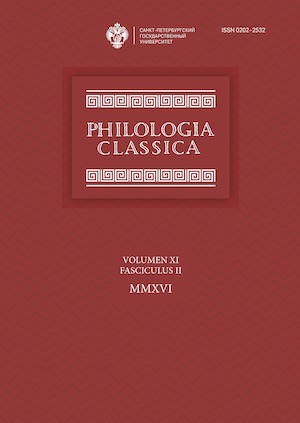The Children of Mnemosyne: a Contrastive Metapoetics of Pindar and Bacchylides
DOI:
https://doi.org/10.21638/11701/spbu20.2016.202Abstract
The article investigates the uses to which the figures of the Muse(s) are put in the poetics of Pindar and Bacchylides, considered against the background of their earlier employments in elegiac and melic poetry. Based on a thorough examination of the evidence, it argues that the two poets pursue different strategies: whereas Bacchylides develops a poetic mythology of named Muses (particularly, Ourania), Pindar redeploys the single unnamed Muse of the earlier hexameter and choral traditions, envisioning her as the poet’s collaborator. Pindar may thus be seen to originate the notion of the Muse as a deity associated with poetic composition, as contrasted with her mnemonic-epistemic role in hexameter verse.
Keywords:
Archaic Greek lyric, epinikion, metapoetics, authorship, the Muses, Pindar
Downloads
References
Downloads
Published
How to Cite
Issue
Section
License
Articles of "Philologia Classica" are open access distributed under the terms of the License Agreement with Saint Petersburg State University, which permits to the authors unrestricted distribution and self-archiving free of charge.






